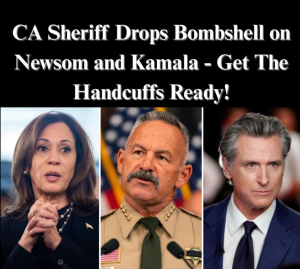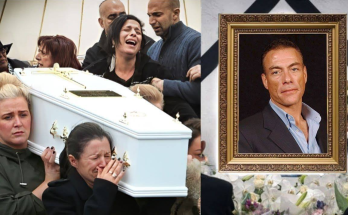A California sheriff has ignited a firestorm of controversy after publicly accusing Governor Gavin Newsom of “encouraging” unrest during recent riots in Los Angeles. The statement came as Immigration and Customs Enforcement (ICE) announced a series of arrests targeting violent undocumented immigrants who, authorities say, played a role in escalating the chaos.
The sheriff, speaking at a tense press conference, didn’t hold back in his criticism of Newsom’s leadership. “When leaders use inflammatory language, refuse to support law enforcement, and downplay criminal activity, they create an environment where lawlessness thrives,” he said. Though he didn’t cite specific remarks by Newsom, the sheriff claimed the governor’s public statements and policies signaled tacit approval to those looking to exploit peaceful protests for violent ends.
The unrest in Los Angeles began as demonstrations over broader national issues but quickly descended into vandalism, looting, and attacks on police. Video footage circulated online showing fires burning, businesses ransacked, and officers injured during clashes. Critics of Newsom argue that his administration’s soft approach to crime and immigration enforcement has emboldened bad actors, while supporters say the governor has tried to balance public safety with respect for civil rights.
In parallel to these events, ICE revealed that its officers had detained several undocumented immigrants with violent criminal histories in connection with the riots. According to ICE officials, those arrested included individuals previously convicted of assault, weapons charges, and burglary. One suspect was reportedly wanted for questioning in connection with an attack on a police officer during the disturbances.
An ICE spokesperson said in a statement: “These arrests are part of our ongoing efforts to protect communities from individuals who pose a threat to public safety. Violent criminals, regardless of immigration status, will be held accountable.” The agency’s actions drew praise from some quarters and condemnation from others who see it as an attempt to scapegoat immigrants for wider societal issues.
Governor Newsom’s office declined to comment directly on the sheriff’s accusations but reiterated that the governor “has consistently called for peaceful demonstrations and condemned violence and destruction.” Newsom’s allies dismissed the sheriff’s remarks as politically motivated, suggesting that tensions between local law enforcement and the governor’s office have been brewing for months over issues such as bail reform, sanctuary state policies, and funding for police departments.
The clash between the sheriff and the governor highlights the deep divisions within California over how to handle civil unrest, immigration, and law enforcement. As communities work to recover from the damage and heal from the violence, many are left asking whether political leaders can set aside their differences to focus on restoring safety and trust. One thing is certain: the debate over who bears responsibility for the unrest is far from over, and California’s approach to law and order will continue to be fiercely contested in the months ahead.
